Essay On Right To Education
500 words essay on right to education.
Education enables individuals to put their potentials to optimal use. Moreover, it makes them a thinker and correct decision-maker. This is possible because of getting access to knowledge from the external world. Thus, education opens new windows to the outside world. Through an essay on right to education , we will discuss its importance and benefits.


Importance of Right to Education
Education is an essential condition to free individual development. It is what can make a person fit for the tasks of citizenship. Moreover, when you are not educated, you will hardly understand politics or stay vigilant about national interests.
Thus, participation in state affairs is going to be negligible only. In other words, a citizen like that will be no less than a slave to others. This will prevent them from rising in the stature of their personality. Usually, others will make decisions for that person.
Consequently, it will be a failure of democracy. The right to education is a civil right that safeguards individuals from all this. While it does not guarantee an identical intellectual training of everyone nonetheless, it does provide provisions for that type of education.
Without the right to education, people won’t be able to get live their life as they wish to, especially those who cannot afford it. It ensures that everyone gets an equal right to education so that we all can develop as a society without leaving anyone section out.
Thus, the right to education can be life-changing for people who wish to change their lives and break the old-age cycle. It helps individuals to get equal access to education like any other citizen without any discrimination.
Benefits of Right to Education
There are many benefits which the right to education provides us with. Firstly, it has brought many changes in society in terms of ease of education. Further, it ensures a consistent fee structure for all.
In other words, schools cannot make any sudden hikes in fees so people don’t suffer from it. After that, it also ensures that everybody gets an education easily by making it available to everyone.
A lot of underprivileged students cannot find ample resources despite having talent. Thus, it ensures that they can rightfully pursue their education. Consequently, it increases the literacy rate of a nation.
This is without a doubt a great advantage for any country. Moreover, it removes any kind of discrimination especially for people belonging to different economic backgrounds. Similarly, it applies to disabled people as well.
Most importantly, it ensures that schools offer seats to those who cannot afford to pay their fees. Thus, it helps the underprivileged people to partake in it thereby making education reach all sectors of society.
Get the huge list of more than 500 Essay Topics and Ideas
Conclusion of Essay on Right to Education
All in all, every citizen must get a chance to get access to education which will enable them to judge, weigh and make decisions for themselves. It is a life-changer for many people all over the world especially those belonging to the underprivileged sector to outshine.
FAQ of Essay on Right to Education
Question 1: Why is education important for child development?
Answer 1: Education offers children to learn with diversity. Thus, children will develop healthy social interaction by blending in with other kids belonging to different cultures and backgrounds. Moreover, it can boost their self-esteem and self-confidence.
Question 2: Why is the right to education important?
Answer 2: The right to education is essential as it is a human right and indispensable for the exercise of other human rights. Quality education strives to guarantee the development of a fully-rounded human being. Similarly, it is one of the most powerful tools which can lift socially excluded children and adults out of poverty.
Customize your course in 30 seconds
Which class are you in.

- Travelling Essay
- Picnic Essay
- Our Country Essay
- My Parents Essay
- Essay on Favourite Personality
- Essay on Memorable Day of My Life
- Essay on Knowledge is Power
- Essay on Gurpurab
- Essay on My Favourite Season
- Essay on Types of Sports
Leave a Reply Cancel reply
Your email address will not be published. Required fields are marked *
Download the App


5 Must-Read Essays on the Right to Education
When the United Nations adopted the Universal Declaration on Human Rights, Article 26 asserted that all people have the right to education. That right appears in other documents such as the Convention on the Rights of the Child (1989) and in treaties about women and girls, refugees, migrants, and others. Many constitutions around the world also list education as a right. However, the right to education isn’t always upheld. To understand more about education as a human right, and where and why it’s often not a reality, here are five must-read essays:
“ Girls Can Change The World – But We Have To Invest In Them First ” – Malala Yousafzai
Writing for Time Magazine in 2018, Malala Yousafzai’s essay details the importance of educating girls. It’s short, but like all of Malala’s writing, it’s impactful. She opens with the sobering statistic that 130 million girls are not in school. Despite promises at the United Nations to guarantee that every girl will get 12 years of education by 2030, donor countries either halted or decreased their giving for education. Malala expresses her discouragement, but remains hopeful, drawing attention to the Malala Fund and impact of local activists and educators.
The youngest Nobel Prize laureate, Malala is a Pakistani human rights activist, with a special focus on female education. In 2012, the Taliban attempted to assassinate her since she was already a well-known activist, but she survived. The attack and recovery made her a household name, and she won the Nobel Prize two years later. She is a writer and current student at Oxford University.
“ Is Education a Fundamental Right? ” – Jill Lepore
A relatively-unknown Supreme Court Case from 1982, Plyler v. Doe addressed questions about education, immigration, and if schooling is a human right. In her essay, Jill Lepore writes that this case could become much better known as various lawsuits filed on behalf of immigrant children enter the court system. These are the children who are separated from their parents at the border and deprived of education. Using Plyler v. Doe as a guide along with the other cases both past and present, Lepore explores the issue of education as a fundamental right in the United States.
This essay appeared in the print edition of The New Yorker in September 2018 under the headline “Back to the Blackboard.” Jill Lepore is a professor of history at Harvard University and a staff writer for the New Yorker. Publications include the book These Truths: A History of the United States and This America: The Case for the Nation.
“ How to Improve Access to Education Around the World ” – Jan Lee
In this piece on the Triple Pundit platform, Lee takes a look at how Pearson, an education publishing and assessment service company based in the UK, is making an impact on education access around the world. In the United States, Pearson works on finding solutions for the social and economic problems that lead to low high-school graduation rates. Pearson also invests in low-cost private education around the world. The essay highlights how access to education can be improved through new educational technology for students with disabilities and outreach to underserved communities. Since this article was sponsored by Pearson, it doesn’t look at what other companies or organizations are doing, but it provides a good model for the kinds of actions that can help.
Jan Lee is an award-winning editorial writer and former news editor, whose work can be found Triple Pundit, JustMeans, and her blog The Multicultural Jew. On Triple Pundit, she’s written stories on a variety of topics, such as Leadership & Transparency, Data & Technology, and Energy & Environment.
“ Higher Education Is A Human Right ” – Heidi Gilchrist
It’s established that primary education is a human right, but what about higher education? In her essay, Heidi Gilchrist argues that it is. Looking specifically at the United States, her reason is that in order to access the American dream- which she calls the “ideal it [the country] was founded on” – people need higher education. As global society starts to depend more on technology and other complex systems, more and more jobs will require advanced degrees. In order to truly succeed and achieve their dreams, people will need higher education. Gilchrist offers another perspective on the issue, as well, writing that countries need people with advanced degrees to protect national security. Having higher education remain a luxury means only the wealthy can access it, and that harms a society in every regard.
Heidi Gilchrist is a Lecturer-in-Law at Columbia Law School and an Assistant Professor of Legal Writing at Brooklyn Law. In her previous career, she served as a national security analyst in the federal government, and as a laison to the FBI’s Joint Terrorism Task Force in New York City. She writes on national security and how it converges with human rights law and civil rights.
“ Public schools for private gain: The declining American commitment to serving the public good ” – David F. Larabee
In an essay that is both a history lesson and critical look at the pursuit of education as a “private benefit,” Larabee argues that this new view of schooling is dangerous. While in the past, school had been seen as a community where students of all backgrounds and finances mingle and receive opportunities, it’s morphing into just another capitalist arena. Wealthy parents are choosing private schools and focusing their resources there, while public schools and students struggle. School is becoming “a means of private advancement,” Larabee says, instead of a source of public good. This has serious long-term consequences.
David Larabee is a Lee L. Jacks Professor of Education, emeritus, at the Standard University Graduate School of Education. He describes himself as a “sociologically oriented historian of education.” He is also an author, most recently of 2017’s A Perfect Mess: The Unlikely Ascendancy of American Higher Education.
You may also like

Apply now: Essex Human Rights Summer School (Fully Online)

17 International Organizations Offering Early-Career Opportunities

Gender Rights Jobs: Our Short Guide

Free MOOC on Children’s Right to Education in Armed Conflict

9 Online Courses on Leading Diverse Teams

40 Top-Rated Social Issues Courses to Study in 2024

10 Courses to Prepare for Your Human Rights Job
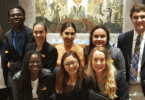
Register now: Global Institute of Human Rights Certificate Program

The UN Immersion Programme Is Open for Applications!
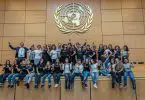
The UN Young Leaders Online Training Programme is Open for Applications!

NGO Jobs: Our Short Guide
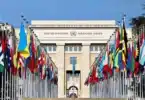
Apply now: UN Post Graduate Diploma in Global Health Procurement and Supply Chain Management
About the author, human rights careers.
Human Rights Careers (HRC) provides information about online courses, jobs, paid internships, masters degrees, scholarships and other opportunities in the human rights sector and related areas.

RSS feed Facebook Twitter Donate Share -->
- News & blog
- Monitoring guide
- Education as a right
- United Nations
- Humanitarian Law
- International Human Rights Mechanisms
- Inter-American
- Regional Human Rights Mechanisms
- What information to look at
- Where to find information
- Comparative Table on Minimum Age Legislation
- Adult education & learning
- Education 2030
- Education Financing
- Education in Emergencies
- Educational Freedoms
- Early Childhood Care and Education
- Free Education
- Higher education
- Technology in education
- Justiciability
- Marginalised Groups
- Minimum Age
- Privatisation of Education
- Quality Education
- News and blog
You are here
Understanding education as a right, 116328scr_india_pupils.jpg.

Education is not a privilege. It is a human right.
Education as a human right means:
- the right to education is legally guaranteed for all without any discrimination
- states have the obligation to protect, respect, and fulfil the right to education
- there are ways to hold states accountable for violations or deprivations of the right to education
Human rights are inherent to all human beings, regardless of nationality, sex, national or ethnic origin, colour, religion, language, or any other status. They cannot be given or taken away.
Human rights are the foundation for freedom, justice and peace in the world.
They are formally and universally recognised by all countries in the Universal Declaration on Human Rights (1948, UDHR). Since the adoption of the UDHR, many treaties have been adopted by states to reaffirm and guarantee these rights legally.
International human rights law sets out the obligations of states to respect, protect, and fulfil human rights for all. These obligations impose specific duties upon states, regardless of their political, economic, and cultural systems.
All human rights are universal, indivisible, interdependent, and interrelated ( Vienna Declaration and Programme of Action , 1993, para. 5).
Equality and non-discrimination are foundational and cross-cutting principles in international human rights law. This means that all human rights apply to everyone.
International human rights law guarantees the right to education. The Universal Declaration on Human Rights , adopted in 1948, proclaims in Article 26: 'everyone has the right to education'.
Since then, the right to education has been widely recognised and developed by a number of international normative instruments elaborated by the United Nations, including the International Covenant on Economic, Social and Cultural Rights (1966, CESCR), the Convention on the Rights of the Child (1989, CRC), and the UNESCO Convention against Discrimination in Education (1960, CADE).
The right to education has also been reaffirmed in other treaties covering specific groups ( women and girls , persons with disabilities , migrants, refugees , Indigenous Peoples , etc.) and contexts ( education during armed conflicts ). It has also been incorporated into various regional treaties and enshrined as a right in the vast majority of national constitutions.
See our pages on international law and national implementation for more information.
Both individuals and society benefit from the right to education. It is fundamental for human, social, and economic development and a key element to achieving lasting peace and sustainable development. It is a powerful tool in developing the full potential of everyone and ensuring human dignity, and in promoting individual and collective wellbeing.
- it is an empowerment right
- it lifts marginalised groups out of poverty
- it is an indispensable means of realising other rights
- it contributes to the full development of the human personality
For more details, see the Committee on Economic, Social and Cultural Rights' General Comment 13 on the right to education (1999, para. 1).
The right to education encompasses both entitlements and freedoms, including the:
right to free and compulsory primary education
right to available and accessible secondary education (including technical and vocational education and training), made progressively free
right to equal access to higher education on the basis of capacity made progressively free
right to fundamental education for those who have not received or completed primary education
right to quality education both in public and private schools
freedom of parents to choose schools for their children which are in conformity with their religious and moral convictions
freedom of individuals and bodies to establish and direct education institutions in conformity with minimum standards established by the state
academic freedom of teachers and students
The 4As were developed by the first UN Special Rapporteur on the right to education, Katarina Tomaševski, and adopted by the Committee on Economic, Social and Cultural Rights in its General Comment 13 on the right to education (1999, para.6). To be a meaningful right, education in all its forms and at all levels shall exhibit these interrelated and essential features:
Available – Education is free and there is adequate infrastructure and trained teachers able to support the delivery of education.
Accessible – The education system is non-discriminatory and accessible to all, and positive steps are taken to include the most marginalised.
Acceptable – The content of education is relevant, non-discriminatory and culturally appropriate, and of quality; schools are safe and teachers are professional.
Adaptable – Education evolves with the changing needs of society and challenges inequalities, such as gender discrimination; education adapts to suit locally specific needs and contexts.
For more details see:
- Primer 3 Human rights obligations: making education available, accessible, acceptable and adaptable (RTE, Katarina Tomaševski, 2001)
When a state has ratified a treaty that guarantees the right to education, it has obligations to respect, protect, and fulfil this right. Some obligations are immediate. Others are progressive.
Obligations to respect, protect, and fulfil:
- respect: refrain from interfering with the enjoyment of the right (e.g., the state must respect the liberty of parents to choose schools for their children)
- protect: prevent others from interfering with the enjoyment of the right usually through regulation and legal guarantees (e.g., the state must ensure that third parties, including parents, do not prevent girls from going to school)
- fulfil: adopt appropriate measures towards the full realisation of the right to education (e.g., the state must take positive measures to ensure that education is culturally appropriate for minorities and indigenous peoples, and of good quality for all)
Immediate and progressive obligations:
As with other economic, social and cultural rights, the full realisation of the right to education can be hampered by a lack of resources and can be achieved only over a period of time, particularly for countries with fewer resources. This is the reason why some state obligations are progressive, for instance, the introduction of free secondary and higher education.
However, no matter how limited resources are, all states have immediate obligations to implement the following aspects of right to education:
- ensure minimum core obligations to meet the essential levels of the right to education, which includes prohibiting discrimination in access to and in education, ensuring free and compulsory primary education for all, respecting the liberty of parents to choose schools for their children other than those established by public authorities, protecting the liberty of individuals and bodies to establish and direct educational institutions
- take appropriate steps towards the full realisation of the right to education to the maximum of its available resources. A lack of resources cannot justify inaction or indefinite postponement of measures to implement the right to education. States must demonstrate they are making every effort to improve the enjoyment of the right to education, even when resources are scarce
- not take retrogressive measures. This means that the state should not take backwards steps or adopt measures that will repeal existing guarantees of the right to education. For instance, introducing school fees in secondary education when it had formerly been free of charge would constitute a retrogressive measure
States have the primary duty to ensure the right to education. However, other actors play a key role in promoting and protecting this fundamental right.
According to international law, other actors have responsibilities in upholding the right to education:
- the role of multilateral intergovernmental agencies, such as UNESCO, OHCHR, UNICEF, is of particular importance in relation to the realisation of the right to education in providing technical and financial assistance
- international financial institutions should play greater attention to the protection of the right to education in their policies, credit agreements, structural adjustment programmes and measures taken in response to the debt crisis
- private businesses also have the responsibility to respect human rights and avoid infringing on the rights of others. For more information, see UN Guiding Principles on Business and Human Rights , Committee on Economic, Social and Cultural Rights' General Comment 24 , Committee on the Rights of the Child's General Comment 16 , and our page on Privatisation
- civil society plays a crucial role in promoting the right to education and holding the state accountable for its obligations
- parents have the responsibility to ensure that their children attend compulsory education. They cannot deny their children access to education
Violations of the right to education may occur through direct action of States parties (act of commission) or through their failure to take steps required by law (act of omission). Concrete examples are given in paragraph 59 of General Comment 13 .
Whilst the vast majority of countries have ratified international treaties that recognise the full right to education, it is still denied to millions around the world due to lack of resources, capacity, and political will. There are still countries that have not integrated the right to education into their national constitution or provided the legislative and administrative frameworks to ensure that the right to education is realised in practice. Most of the children and adults who do not fully enjoy the right to education belong to the most deprived and marginalised groups of society which are often left behind in national policies.
- raise awareness on the right to education. If individuals knows their rights they are empowered to claim them
- monitor the implementation of the right to education and report regularly on deprivations and violations
- advocate and campaign for the full implementation of the right to education, holding the state accountable
- seek remedies when there are violations of the right to education
See our page on Using rights in practice for more details on what you can do.

Search the United Nations
- UNAI Principles
- Map of UNAI Members
- List of UNAI Members
- Special Series
- Select UN Events
- UNAI Events
- SDGs Best Practices
- SDGs Guidelines
- SDGs Training Sessions
- SDGs Workshops
- The Why Join Guide
- Tools for Researchers
- Bulletin Board
- Submit an Activity Report
- Become a Millennium Fellow
- UNAI Voices
- Sustainable Development Goals
- UN Agencies
- UN Information Centres
- Dag Hammarskjöld Library
- UN Stories Archive
- UN Publications
- Internships
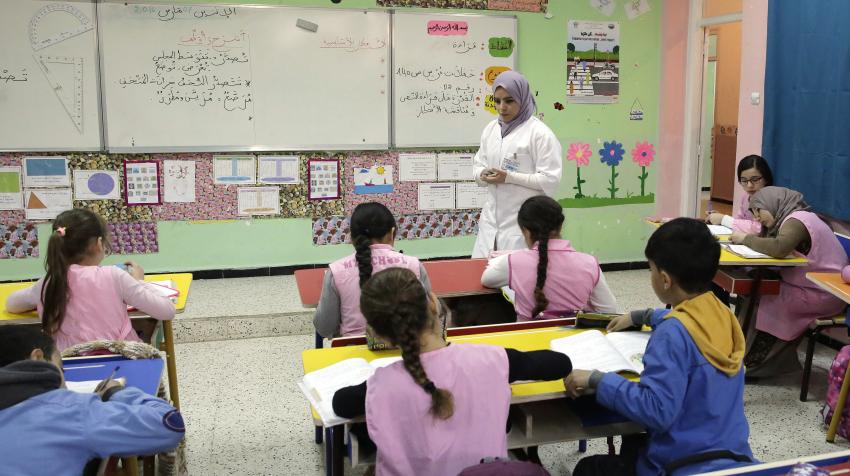
Re-examining the Right to Education from a Contemporary Perspective
Education is not only a fundamental human right, but also a prerequisite for everyone to realize human rights for themselves, individually and personally, as well as in the community and society to which people belong. At the same time, education is the basis for realizing a global society of all people. Education and teaching have both a fundamental role to play in creating a just society based on solidarity for all. And, education, learning and humanity are inextricably linked and permeate all spheres of human life.
It is a personal, and above all, comprehensive right which can be realized beyond political, economic and religious provisions. The United Nations has expressed this not least explicitly in the position of the right to education within article 26 of the Universal Declaration of Human Rights (UDHR) . Every human being has an irrevocable and guaranteed right to acquire, without obstacles, the knowledge and skills to ensure a dignified and autonomous life. A number of human rights conventions have also emphasized this.
Education is the basis for personal freedom in a democratic society and States have an international responsibility towards this. In the 20th century great progress was made worldwide to realize the right to education to the extent that at least basic education can be achieved by many people: they can read, write, calculate, and the number of children who do not have these basic skills is decreasing. This gives hope, but there are still many challenges in several countries and regions of the world where people even today do not have access to education.
In line with these concerns, the project Extension of Human Rights to Education was created as a grass-roots initiative by asserting that education is the right of all peoples and must be defended. It is being carried out by the Institute of Education and Culture of the Friedrich Schiller University Jena with Hochschule / University of Applied Sciences Koblenz, as cooperation partner, both member institutions of UNAI in Germany. Other relevant stakeholders like the Interdisciplinary Center for Research into Childhood and Society of the University of Wuppertal, the PoliTeknik Journal and the Association for All-Round Education are also part of this initiative.
The project brings together individuals across generations to exchange information about the situation of education in their societies, talk to each other and address education as a collective as well as a personal good. Together they find out what education means to them - beyond the possible demands of economic and political interests. The concept of education needs to be constantly rethought and expanded. This would require, in turn, the ability to look at the world critically and with a concern for social well-being.
The aforementioned project aims to reconsider the close relationship between education and freedom and how education can foster awareness on global issues, with an international perspective in mind. This is the project’s focus: re-examine and re-formulate the original article 26 of the UDHR . Education is a means to effectively and autonomously engage with one’s environment and is both an individual and a social process, and there must be safeguards ensuring its development in these aspects.
A redefinition of education from a human rights approach, in light of the current circumstances, will foster the actual implementation of the obligations derived from International Law on this critical component of individual and social well-being. You can click here to know more about the related #RightToEducation campaign of the United Nations Educational, Scientific and Cultural Organization (UNESCO) and on this page , you can see the targets, indicators and progress achieved so far on the Sustainable Development Goal 4: Quality Education.
UNITED NATIONS
- Universal Declaration of Human Rights
TAKE ACTION
- Lazy Person's Guide
- UN Volunteers
- Youth Engagement
- Past Contests and Scholarships
- Request a Speaker
- Visit the UN
NEWS AND MEDIA
- UN News Centre
- Press Releases
- Office of the Spokesperson
- UN in Action
- UN Social Media
- The Essential UN
ISSUES AND CAMPAIGNS
- SDG of the Month
- Observances and Commemorations
- Celebrity Advocates for the UN
Your Right to Equality in Education
Getting an education isn’t just about books and grades – we’re also learning how to participate fully in the life of this nation. (We’re tomorrow’s leaders after all!)
But in order to really participate, we need to know our rights – otherwise we may lose them. The highest law in our land is the U.S. Constitution, which has some amendments, known as the Bill of Rights. The Bill of Rights guarantees that the government can never deprive people in the U.S. of certain fundamental rights including the right to freedom of religion and to free speech and the due process of law. Many federal and state laws give us additional rights, too.
The Bill of Rights applies to young people as well as adults. And what I’m going to do right here is tell you about EQUAL TREATMENT .
DO ALL KIDS HAVE THE RIGHT TO AN EQUAL EDUCATION?
Yes! All kids living in the United States have the right to a free public education. And the Constitution requires that all kids be given equal educational opportunity no matter what their race, ethnic background, religion, or sex, or whether they are rich or poor, citizen or non-citizen. Even if you are in this country illegally, you have the right to go to public school. The ACLU is fighting hard to make sure this right isn’t taken away.
In addition to this constitutional guarantee of an equal education, many federal, state and local laws also protect students against discrimination in education based on sexual orientation or disability, including pregnancy and HIV status.
In fact, even though some kids may complain about having to go to school, the right to an equal educational opportunity is one of the most valuable rights you have. The Supreme Court said this in the landmark Brown v. Board of Education case when it struck down race segregation in the public schools.
If you believe you or someone you know is being discriminated against in school, speak up! Talk to a teacher, the principal, the head of a community organization or a lawyer so they can investigate the situation and help you take legal action if necessary.
ARE TRACKING SYSTEMS LEGAL?
Yes, as long as they really do separate students on the basis of learning ability and as long as they give students the same basic education.
Many studies show, however, that the standards and tests school officials use in deciding on track placements are often based on racial and class prejudices and stereotypes instead of on real ability and learning potential. That means it’s often the white, middle-class kids who end up in the college prep classes, while poor and non-white students, and kids whose first language isn’t English, end up on “slow” tracks and in vocational-training classes. And often, the lower the track you’re on, the less you’re expected to learn – and the less you’re taught.
Even if you have low grades or nobody in your family ever went to college, if you want to go to college, you should demand the type of education you need to realize your dreams. And your guidance counselor should help you get it! Your local ACLU can tell you the details of how to go about challenging your track placement.
CAN STUDENTS BE TREATED DIFFERENTLY IN PUBLIC SCHOOL BASED ON THEIR SEX?
Almost never. Public schools may not have academic courses that are just for boys – like shop – or just for girls – like home economics. Both the Constitution and federal law require that boys and girls also be provided with equal athletic opportunities. Many courts have held, however, that separate teams for boys and girls are allowed as long as the school provides students of both sexes the chance to participate in the particular sport. Some courts have also held that boys and girls may always be separated in contact sports. The law is different in different states; you can call your local ACLU affiliate for information.
CAN GIRLS BE KICKED OUT OF SCHOOL IF THEY GET PREGNANT?
No. Federal law prohibits schools from discriminating against pregnant students or students who are married or have children. So, if you are pregnant, school officials can’t keep you from attending classes, graduation ceremonies, extracurricular activities or any other school activity except maybe a strenuous sport. Some schools have special classes for pregnant girls, but they cannot make you attend these if you would prefer to be in your regular classes.
CAN SCHOOLS DISCRIMINATE AGAINST GAY STUDENTS?
School officials shouldn’t be able to violate your rights just because they don’t like your sexual orientation. However, even though a few states and cities have passed laws against sexual orientation discrimination, public high schools have been slow to establish their own anti-bias codes – and they’re slow to respond to incidents of harassment and discrimination. So while in theory, you can take a same-sex date to the prom, join or help form a gay group at school or write an article about lesbian/gay issues for the school paper, in practice gay students often have to fight hard to have their rights respected.
WHAT ABOUT STUDENTS WITH DISABILITIES?
Although students with disabilities may not be capable of having exactly the same educational experiences as other students, federal law requires that they be provided with an education that is appropriate for them. What is an appropriate education must be worked out individually for each student. For example, a deaf student might be entitled to be provided with a sign language interpreter.
In addition to requiring that schools identify students with disabilities so that they can receive the special education they need in order to learn, federal law also provides procedures to make sure that students are not placed in special education classes when they are not disabled. If you believe you’re not receiving an appropriate education, either because you are not in special classes when you need to be, or because you are in special classes when you don’t need to be, call the ACLU!
And thanks to the Americans with Disabilities Act (ADA), students who are HIV positive have the same rights as every other student. People with HIV are protected against discrimination , not only in school but in many other public places such as stores, museums and hotels.
People with HIV aren’t a threat to anyone else’s health, because the AIDS virus can’t be spread through casual contact. That’s just a medical fact. Your local ACLU can provide information on how to fight discrimination against people with HIV.
CAN I GO TO PUBLIC SCHOOL IF I DON’T SPEAK ENGLISH?
Yes. It is the job of the public schools to teach you to speak English and to provide you with a good education in other subjects while you are learning. Students who do not speak English have the right to require the school district to provide them with bilingual education or English language instruction or both.
“No person in the United States shall, on the basis of sex, be excluded from participation in, be denied the benefits of, or be subjected to discrimination under any education program or activity receiving Federal financial assistance.” –Title IX, Education Amendments of 1972
We spend a big part of our life in school, and our voices count. Join the student government! Attend school meetings! Petition your school administration! Talk about your rights with your friends! Let’s make a difference!
Produced by the ACLU Department of Public Education. 125 Broad Street, NY NY 10004. For more copies of this or any other Sybil Liberty paper, or to order the ACLU handbook The Rights of Students or other student-related publications, call 800-775-ACLU or visit us on the internet at https://www.aclu.org .
Related Issues
- Racial Justice
- Mass Incarceration
- Smart Justice
- Women's Rights
Stay Informed
Every month, you'll receive regular roundups of the most important civil rights and civil liberties developments. Remember: a well-informed citizenry is the best defense against tyranny.
By completing this form, I agree to receive occasional emails per the terms of the ACLU’s privacy statement.
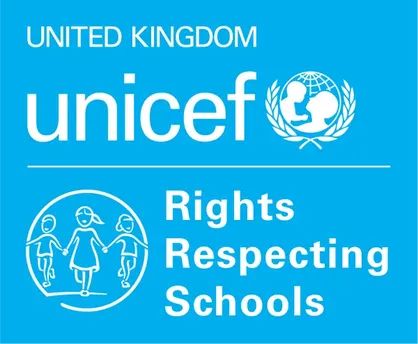
The right to education
Introducing articles 28 and 29.
Home > The Rights Respecting Schools Award > The Right to Education
The Right to an Education is one of the most important principles in becoming a Rights Respecting School.
Education is a key social and cultural right and plays an important role in reducing poverty and child labour. Furthermore, education promotes democracy, peace, tolerance, development and economic growth. There are a number of articles in the UN Convention on the Rights of the Child that focus on a child’s right to education.
Articles 28 and 29 of the Convention on the Rights of the Child
Articles 28 and 29 focus on a child’s right to an education and on the quality and content of education. Article 28 says that “State Parties recognise the right of children to education” and “should take all appropriate measures to ensure that school discipline is administered in a manner consistent with the child’s human dignity.” Article 29 focuses on the aims of education and says that governments agree that “the education of the child shall be directed to:
- The development of the child’s personality, talents and mental and physical abilities to their fullest potential.
- The development of respect for human rights and fundamental freedoms and the principles enshrined in the Charter of the United Nations.
- The development of respect for the child’s parents, his or her own cultural identity, language and values, for the national values of the country in which the child is living, the country from which he or she may originate and for civilisations different from his or her own.
- The preparation of the child for responsible life in a free society in the spirit of understanding, peace, tolerance, equality of sexes and friendship among all peoples, ethnic, national and religious groups and persons of indigenous origin.
- The development of respect for the natural environment.
The 1990 World Declaration on Education for All described education as consisting of essential learning tools such as literacy, numeracy and problem solving combined with knowledge, skills, values and attitudes required by human beings to survive, develop potential, to improve the quality of their lives, to make informed decisions and to continue learning.
General Comment on the aims of education
In 2001, the Committee on the Rights of the Child , the body of experts that monitors the implementation of the Convention, published a paper (called a General Comment) that explained and elaborated on the right to education.
The General Comment 1 on the aims of education provides a very clear overview of what the right to education means in practice. It said that:
- Education must be child-centred and empowering. This applies to the curriculum as well as the educational processes, the pedagogical methods and the environment where education takes place.
- Education must be provided in a way that respects the inherent dignity of the child and enables the child to express his or her views in accordance with article 12 (1) and to participate in school life.
- Education must respect the strict limits on discipline reflected in article 28 and promote non-violence in school.
- Education must include not only literacy and numeracy but also life skills such as the ability to make well-balanced decisions; to resolve conflicts in a non‑violent manner; and to develop a healthy lifestyle, good social relationships and responsibility, critical thinking, creative talents, and other abilities which give children the tools needed to pursue their options in life.
It’s important to remember that the Convention must be seen as a whole and so articles 28 and 29 should not be looked at or considered in isolation. Particular regard should be paid to the General Principles and other closely related articles for example: article 16 : protection of privacy, article 24 health (including health education), article 31 rest, leisure, play, recreation and culture.
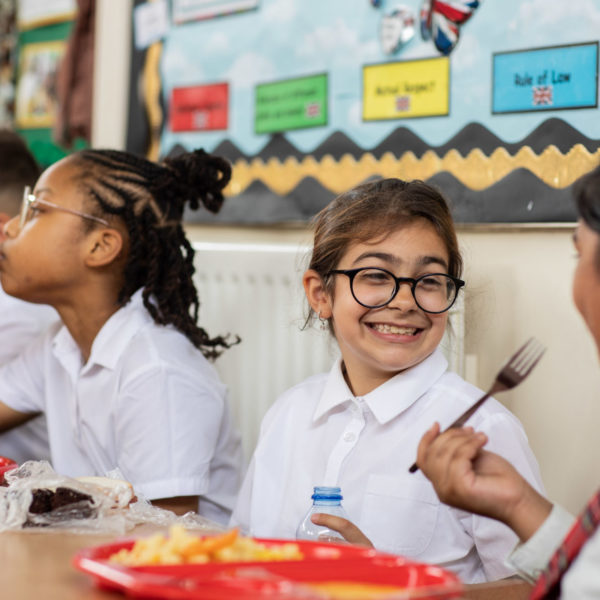
Steps to the award
Getting Started
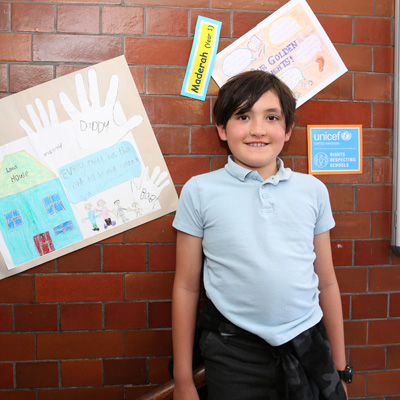
About the award
Introducing the United Nations Convention on the Rights of the Child
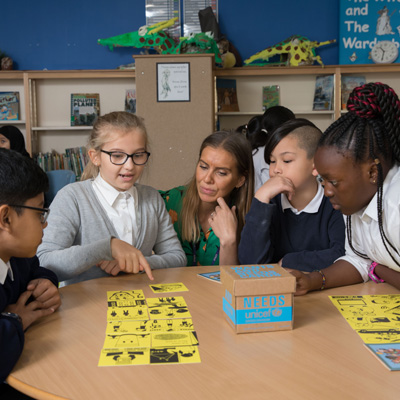
Search Search
Right to education
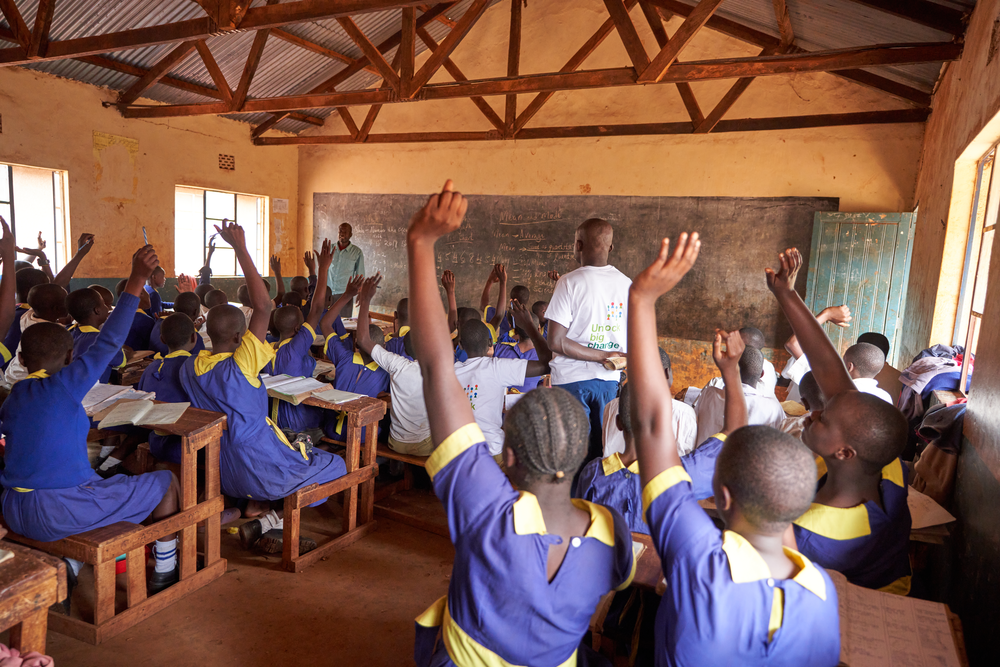
This page is about the right to education and how it must be put into place for every child as a fundamental human right.
What is the right to education, how many people are denied the right to education, why does it matter, what do we mean by a right to education, who is responsible for enforcing the right to education, what do governments need to do to about the right to education, what must countries do to meet their obligations.
Education is a basic human right for all and is important for everyone to make the most of their lives. Other human rights include the right to freedom from slavery or torture and to a fair trial.
Having an education helps people to access all of their other human rights. Education improves an individual’s chances in life and helps to tackle poverty.
According to the the most recent figures available from the UNESCO Institute for Statistics in July 2016 , 263 million children and youth are out of school.
This includes 61 million children who should be in primary school, 60 million of lower secondary school age (ages 12 to 14) and 142 million who are aged between 15 and 17.
Girls and children from sub-Saharan Africa are most likely to be missing out on their education.
Armed conflict also means that children struggle to get an education – 22 million children of primary school age are affected by this. 75 million children and adolescents have had their education directly affected by conflict and emergencies.
Education reduces poverty, decreases social inequalities, empowers women and helps each individual reach their full potential.
It also brings significant economic returns for a country and helps societies to achieve lasting peace and sustainable development. Education is key to achieving all other human rights.
Every person is entitled to a quality education without discrimination, which means:
- A compulsory free primary school education for every child
- Secondary school (including technical training) must be available to everyone – states must work towards providing this for free
- Higher education must be equally accessible, with countries working towards the goal of making this free
- Fundamental education for those who missed out on primary school should be encouraged and available
It also means parents have the right to choose schools for their children and for individuals and organisations to set up schools that meet minimum standards.
Theirworld also believes that every child should have access to two years of free, quality pre-primary education.
Governments must provide good quality education and make sure all children can access it, without discrimination.
This is an international legal obligation and governments can be held accountable for failing to provide education for all its citizens.
Education has been recorded as a basic human right in international law since 1948. It is included in many documents and treaties including:
- Universal Declaration of Human Rights (1948)
- Convention Against Discrimination in Education (1960)
- International Covenant on Economic, Social and Cultural Rights (1966)
- Convention on the Elimination of All Forms of Discrimination against Women (1979)
- African Charter on Human and People’s Rights (1986)
- Convention on the Rights of the Child (1989)
- World Declaration on Education for All: Meeting Basic Learning Needs (1990)
- The Dakar Framework for Action: Education for All (2000)
- Convention on the Rights of Persons with Disabilities (2006)
- UN General Assembly Resolution on the Right to Education in Emergency Situations (2010)
Governments must guarantee that education in their country or state is:
- Available. There must be adequate materials, classrooms, trained teachers and so on – so that a quality education is available to every child.
- Accessible. Schools must be within reach, suitable for disabled children and fit for purpose. They must be affordable for all children. There must be no discrimination for gender, race, religion or any other reason.
- Acceptable. Education must be of a high quality and include relevant information that is appropriate. Children with disabilities have the right to the same quality of education.
- Adaptable. Schools and school systems must be suitable for the communities they serve.
Governments have to make sure all children can get the education they are entitled to by doing the following:
- Removing anything that prevents access to quality education, such as repealing laws that cause discrimination
- Preventing individuals or groups from stopping children from being educated
- Taking steps to make sure children can get a quality education – this could include building schools or training teachers
The international community knows that achieving the full extent of the right to education will take time and resources.
Governments must put plans in place to meet the minimum standard of free, compulsory primary education and then take steps to extend the right to education to every child.
The right to education without discrimination is part of the minimum standard and must be created immediately.
It’s very important that governments continue to work towards the full right to education and don’t allow plans to stall or be delayed.
As well as governments, other organisations and individuals play a part in making sure that all children can access quality education. These include intergovernmental agencies such as UNESCO, international financial institutions, businesses, civil societies and parents.
Advertisement
The Universal Right to Education: Freedom, Equality and Fraternity
- Published: 24 December 2009
- Volume 29 , pages 167–182, ( 2010 )
Cite this article
- Ylva Bergström 1
1440 Accesses
10 Citations
Explore all metrics
The overall aim of the article is to analyse how the universal right to education have been built, legitimized and used. And more specifically ask who is addressed by the universal right to education, and who is given access to rights and to education. The first part of the article focus on the history of declarations, the notion of the universal right to education, emphasizing differences in matters of detail—for example, the meaning of ‘compulsory’, ‘children’s rights’ or ‘parents’ rights’—and critically examining the right of the child and the right of the parent in terms of tensions between ‘social rights’ and ‘private autonomy rights’. Despite differences in detail, the iterations of the universal right to education do share to the full in the idea of education as such. In the second part the attempt to scrutinize the underlying assumptions legitimizing the consensus on education, focusing again on the notion of the child. In conclusion I argue that a certain notion of what it is to be a human being is inscribed within the circle of access to rights and education. These notions of what it means to be a child, a parent, a citizen or a member of the ‘human family’ are notions of enlightenment and humanity and, to my understanding, aspects of how democracy is configured around freedom, equality and fraternity.
This is a preview of subscription content, log in via an institution to check access.
Access this article
Price includes VAT (Russian Federation)
Instant access to the full article PDF.
Rent this article via DeepDyve
Institutional subscriptions

Similar content being viewed by others

Inclusion and equity in education: Making sense of global challenges
Mel Ainscow

Inclusive education: Developments and challenges in South Africa
Petra Engelbrecht

Intersectionality: A pathway towards inclusive education?
Edvina Bešić
Thereby understanding the documents as readable, determined in general, and repeatable, or iterable, an iterability that ties repetition to alterity (1988, p. 7).
Later in this article I argue that such preconditions, per se, disclose a paradox in that the right to education could not be a right on its own. Both civil and political rights require a certain level of education, a certain know-how and capability. It seems that education is a precondition for understanding one’s right to rights.
See Hafen ( 1976 ): ‘Children’s Liberation and the New Egalitarianism: Some Reservations about Abandoning Youth to Their Rights’. For a further insight into related concepts, see Hart ( 1964 ): ‘Are there any Natural Rights?’, Feinberg ( 1966 ): ‘Duties, Rights, and Claims’, and Lyons ( 1969 ): ‘Rights Claimants, and Beneficiaries’.
It is perhaps worth mentioning that in Hegel’s Philosophy of Right ( 2005 [1896]) we can note that once civil society makes its appearance, the abstract relations which aim for social well-being become predominant over the rights of intimacy and privacy.
Frederick the Great, who was King of Prussia from 1740 to 1786, is often cited as the ideal of enlightened despotism, famous for his interest in philosophy and the arts and sciences. His career went through a period of anti-authoritarianism, followed by a cultivation of military virtues.
Kant uses the German word Der Mensch , speaking of the human being.
It is perhaps worth mentioning that the idea of childhood as not yet adult, or as a becoming adult, is entwined with the concept of the child and childhood in developmental psychology (that of Jean Piaget) and sociology (that of Talcott Parsons). The child is viewed as unfinished, not fully human, or incomplete and juxtaposed with adulthood (completion). In consequence, these concepts of socialization include a dichotomy where the child is socially immature and the adult is socially mature (cf. Qvortrup 1990 , 1994 ; Jenks 1996 ).
Derrida notes that the English translation says, ‘somewhat abusively’, ‘democracy where Aristotle says only dēmos’ (Derrida 2005 , p. 48).
Aristotle, (2005). Politics . New York: Barnes & Nobles.
Google Scholar
Biesta, G., & Lawy, R. (2006). From teaching to learning democracy: Overcoming individualism in research, policy and practice. Cambridge Journal of Education, 36 (1), 63–80.
Article Google Scholar
Bill. (1953). 32 Regarding ratification of the First Protocol to The European Convention on Human Rights . The Ministry for Foreign Affairs.
Bill. (1993/94). 117 incorporation of The European Convention on Human Rights and other issues on rights and privileges.
Bobbio, N. (1996). The age of rights . Cambridge: Polity Press.
Derrida, J. (1988). Signature event context. In J. Derrida (Ed.), Limited Inc (pp. 1–23). Evanstone: Northwestern University Press.
Derrida, J. (1992). The other heading: Reflections on today’s Europe . Bloomington & Indianapolis: Indiana University Press.
Derrida, J. (2002a). Who’s afraid of philosophy? Right to philosophy I . Stanford, CA: Stanford University Press.
Derrida, J. (2002b). Negotiations: Inventions and interviews, 1971–2001 . Stanford: Stanford University Press.
Derrida, J. (2005). Rogues, two essays on reason . Stanford, CA: Stanford University Press.
Feinberg, J. (1966). Duties, rights, and claims. American Philosophical Quarterly, 3 , 137–144.
Fortin, J. (1999). Rights brought home for children. Modern Law Review, 62 , 350–370.
Freeman, M. (2000). The future of children’s rights. Children and Society, 14 , 277–293.
Hafen, B. (1976). Children’s liberation and the new egalitarianism: Some reservations about abandoning youth to their rights. Brigham Young University Review, 1976 , 605–658.
Hart, H. L. A. (1964). Are there any natural rights? Philosophical Review, 64 , 175–191.
Hegel, G. W. F. (2005). Philosophy of right . Mineola, NY: Dover and Newton Abbot, David & Charles.
Ignatieff, M. (2001). Human rights as idoltary. In A. Gutman (Ed.), Human rights as politics and idoltary (pp. 53–98.). Princeton: Princeton University Press.
Jenks, C. (1996). Childhood . London: Routledge.
Kant, I. (1992a). Answer to the question: ‘What is Enlightenment?’. In Riess (Ed.), Kant: Political writings (pp. 54–59). Cambridge: Cambridge University Press.
Kant, I. (1992b). Kant on education . Bristol: Thoemmes Press.
Kant, I. (2006). ‘Toward perpetual peace’ and other writings on politics, peace, and history . Yale: Yale University Press.
Kjeldsen, B. M., & Pedersen, V. (1976). European Court . Denmark: Eur.Ct.H.R.
Lawy, R., & Biesta, G. (2006). Citizenship—as-practice. The educational implications of an inclusive and relational understanding of citizenship. British Journal of Educational Studies, 54 (1), 34–50.
Levinas, E. (1987). Time and the other . Pittsburgh, PA: Duquesne University Press.
Lyons, D. (1969). Rights, claimants, and beneficiaries. American Philosophical Quarterly 173–185.
Marshall, T. H. (1992). Citizenship and social class. In T. H. Marshall & Tom Bottomer (Eds.), Citizenship and social class (pp. 3–51). London: Pluto Press.
Murphy, J. (1977). Rights and borderline cases. Arizona Law Review , 228–241.
Qvortrup, J. (1990). A voice of children in statistical and social accounting: A plea for children’s right to be heard. In A. James & A. Prout (Eds.), Constructing and reconstructing childhood . London: The Falmer Press.
Qvortrup, J. (1994). Introduction. In J. Qvortrup, M. Bardy, G. Sigritta, & H. Wintersberger (Eds.), Childhood matters, social theory, practice and politics . Aldershot: Avebury.
Roche, J. (1999). Children’s rights, participation and citizenship. Childhood, 6 , 475–493.
Rousseau, J.-J. (2003). On the social contract . Mineola, New York: Dover Publications Inc.
TP, Volume VIII. (1985). Collected edition of the ‘Travaux Préparatoires’ of the European convention on human rights. The Hague: Nijhoff.
Wahlström, N. (September 2007). Education the most difficult question. A study on democratic iterations concerning the universal right to education . Paper presented at symposium Education as a citizenship right—parental rights, children’s rights or… at ECER, Ghent, Belgium.
United Nations, Economic and Social Council, Division on Human Rights, Documented Outlined, UN. Doc.E/800.
Download references
Author information
Authors and affiliations.
School of Humanities, Education and Social Sciences, Örebro University, 701 82, Örebro, Sweden
Ylva Bergström
You can also search for this author in PubMed Google Scholar
Corresponding author
Correspondence to Ylva Bergström .
Rights and permissions
Reprints and permissions
About this article
Bergström, Y. The Universal Right to Education: Freedom, Equality and Fraternity . Stud Philos Educ 29 , 167–182 (2010). https://doi.org/10.1007/s11217-009-9174-y
Download citation
Published : 24 December 2009
Issue Date : March 2010
DOI : https://doi.org/10.1007/s11217-009-9174-y
Share this article
Anyone you share the following link with will be able to read this content:
Sorry, a shareable link is not currently available for this article.
Provided by the Springer Nature SharedIt content-sharing initiative
- Human rights
- Find a journal
- Publish with us
- Track your research
PTE EXAM PREPARATION
PTE Academic Exam Practice Material
Essay on Right to Education
Read an essay on right to education in English in 300 words. Know more about right to eduction essay in English for students of class 1, 2, 3, 4, 5, 6, 7, 8, 9, 10, 11 and 12. Write an essay on right to education act 2009.
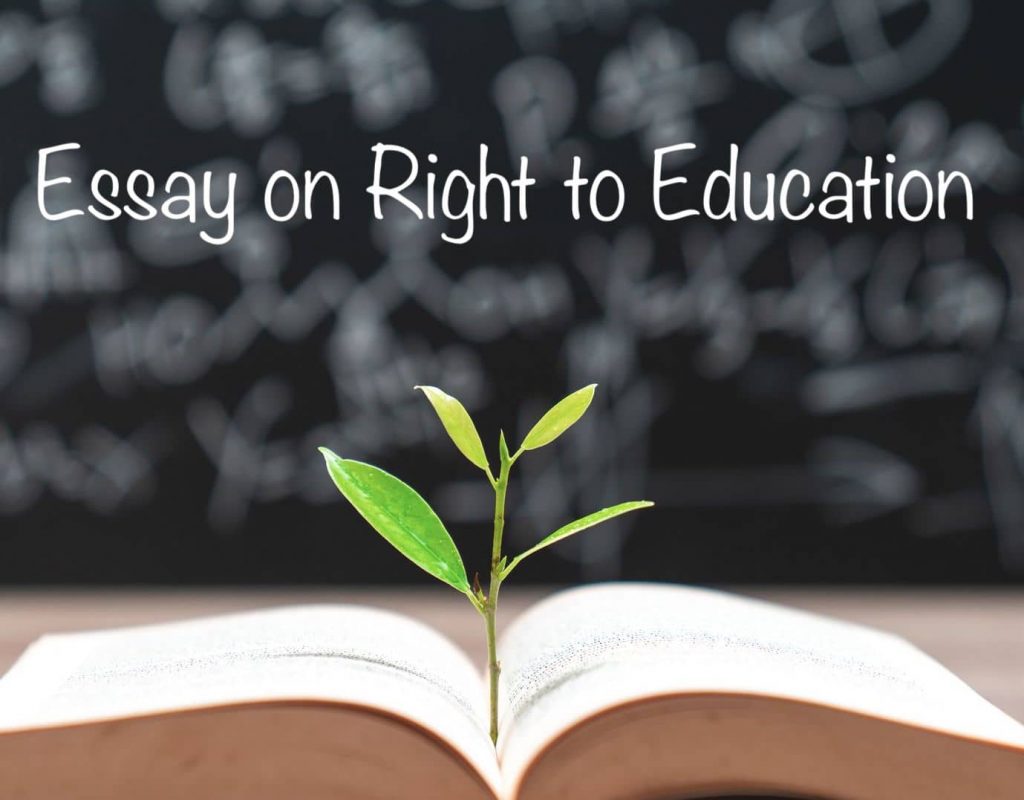
Essay on Right to Education 300 Words
Education is crucial to one’s life as it enables the individual to realize his real potential and use it effectively for the growth of a nation. An educated man has the power to make the right decision based on the facts and figures related to the issue. His mind is a powerhouse of knowledge and he is considered the pride of his family and ultimately an honour to his nation. Therefore, it is important to realize the strength of education and make it compulsory for everyone so that each citizen can avail the benefits of being educated.
Hence, the government and the constitution of India incorporated the Right to Education Act (RTE) or The Right of Children to Free and Compulsory Education Act on August 4, 2009, which explains the significance of the free and compulsory education of children aged between 6 and 14 under the Article 21A of the constitution of India. However, this act became effective on April 1, 2010, after which India was among 135 countries that made the right to education as the fundamental right of every citizen of India.
The Right to Education Act states that it is the responsibility of the government to endow every child with free and compulsory education and it should also ensure their attendance and accomplishment of their elementary education.
It specifically explains that free education should be provided wherein no child should pay any kind of amount or fees to the school for acquiring elementary education. Parents of the child should not be charged for any kind of educational facilities provided to the children. Hence, it is the complete liability of the government to sustain all the expenditure incurred in the process of providing education to the children. It is not only the government schools but private schools are also supposed to reserve 25% of the seats for unprivileged children of the society.
In conclusion, even after so many years of the existence of RTE Act, I cannot see much difference in the education of the weaker sections of the society as many children are seen begging on roads and doing household chores for rich people which clearly exhibits the situation of education among the poor people.
Essay about Technology in Education
Education is the biggest barrier in my learning
Ultimate Guide to Writing Your College Essay
Tips for writing an effective college essay.
College admissions essays are an important part of your college application and gives you the chance to show colleges and universities your character and experiences. This guide will give you tips to write an effective college essay.
Want free help with your college essay?
UPchieve connects you with knowledgeable and friendly college advisors—online, 24/7, and completely free. Get 1:1 help brainstorming topics, outlining your essay, revising a draft, or editing grammar.
Writing a strong college admissions essay
Learn about the elements of a solid admissions essay.
Avoiding common admissions essay mistakes
Learn some of the most common mistakes made on college essays
Brainstorming tips for your college essay
Stuck on what to write your college essay about? Here are some exercises to help you get started.
How formal should the tone of your college essay be?
Learn how formal your college essay should be and get tips on how to bring out your natural voice.
Taking your college essay to the next level
Hear an admissions expert discuss the appropriate level of depth necessary in your college essay.
Student Stories
Student Story: Admissions essay about a formative experience
Get the perspective of a current college student on how he approached the admissions essay.
Student Story: Admissions essay about personal identity
Get the perspective of a current college student on how she approached the admissions essay.
Student Story: Admissions essay about community impact
Student story: admissions essay about a past mistake, how to write a college application essay, tips for writing an effective application essay, sample college essay 1 with feedback, sample college essay 2 with feedback.
This content is licensed by Khan Academy and is available for free at www.khanacademy.org.
I reviewed my Yale admissions file to see what the Ivy League school really thought about my application. What I learned surprised me.
- I reviewed my Yale admissions file to see what the Ivy League school thought about my application.
- Most of my scores weren't that impressive, but they really liked my genuine attitude and excitement.
- Reviewing my application reminded me how far I have come as a student.

"Brian spoke so fast it was electrifying."
This was the first quote from my Yale interviewer. She wrote those words in my admissions file, a document I finally got my hands on three years after being accepted into Yale University .
I remember that interview like it was yesterday. It was a Zoom call — my application cycle happened at the crux of pandemic remote learning — and I was wearing my father's old, oversize dress shirt. The interviewer was lovely. Some of my answers to her questions probably didn't make sense, and she was right. I definitely forgot to breathe in between my sentences.
But viewing my admissions file years later gave me a peek into what my interviewer was actually thinking that day, and I learned what really got me into Yale.
I reviewed my application as a junior with the registrar
Every student in the US can review their college admissions file under the Family Educational Rights and Privacy Act. I emailed my university registrar, and within 45 days, a member of their support staff reached back out to schedule a virtual meeting. Picture-taking and recording were not allowed, so I jotted notes by hand.
There was very little verbal interaction between me and the staff member. She screen-shared my admissions file and let me read in silence. Something told me she understood the emotional weight of this moment for students, and I appreciated that. It is intimidating for any teenager to package their identity into a 650-word common application essay and a questionnaire — but it is arguably even more so to witness retrospectively how everything was judged.
I got a behind-the-scenes look into Yale admissions when they read my application
Each aspect of my application was rated out of nine points. My readers gave me a six for my extracurriculars and for my first teacher recommendation. They gave me a seven for my second teacher recommendation and my counselor's recommendation. I received an "outstanding" for my interview and a 2++ for my overall rating. The overall rating is given on a scale from 1 to 4, with 1 being the highest, and pluses were a good sign.
Related stories
In all, my ratings weren't exactly bad, but they weren't extraordinary either. The numbers on the pages stared back at me — cold, formulaic, and transactional. It felt strange to be reduced to a system of numbers, knowing that something as qualitative as extracurricular activities could still be broken down and scored.
Beyond the ratings, however, what truly stood out were the comments left by the admissions officers . Many of the comments were on my character, my essays, and the possible contributions I would make as a student.
"I teared up reading Essay 1," one reader wrote of my common application essay. Another said of the same essay: "His Chinese New Years are untraditional in that they remind him of his family's financial struggles."
I got emotional. All the memories of writing that essay came flooding back. I remembered how difficult it was to start it. I knew there was no easy way for someone to understand me without first knowing my background. I wanted to prove that I deserved a seat at the table where legacy students and the wealthy continue to outnumber their first-generation, low-income peers like myself.
I kept reading and found more comments from admissions officers that moved me: "He treats his mom well;" "He seems to have a truly good heart;" "One of the most intelligent, sincere, jovial students ever met;" "I have no doubt that Brian would push his peers at Yale to stand up for what's right;" and "I come away with compelling impressions that the student would contribute significantly to the undergrad community."
I searched for a negative comment. There were none.
I didn't deserve this, I muttered under my breath. Here I was, a junior in college, no longer a 4.0 student , my post-grad plans murky, balancing two part-time jobs and hoping to make it out of midterms alive. It felt good knowing that someone had rooted for me to be here.
The process reminded me how far I have come
Coming from an underserved household where no one had gone to college, I had always looked at the Ivy League application process skeptically.
Without the resources to enroll in SAT test prep and the financial safety net to pursue unpaid leadership positions and resume-boosting activities at school, I had doubted the "holistic" admissions process many colleges boast. My critiques about Yale remain numerous.
But at least in their comments, the admissions committee gave me grace in that they reviewed my application in light of my circumstances. I might never know exactly what happened in that reading room. Still, a couple of lessons ring true, based on my own viewing experience and my conversations with others who had done the same: Good character and potential are the key; I didn't need to be perfect.
And finally, I — not anyone else — needed to give me the fighting chance of applying in the first place.
"GPA is outstanding, especially in context," an admissions officer said. "This is a home run."
- Main content

25,000+ students realised their study abroad dream with us. Take the first step today
Meet top uk universities from the comfort of your home, here’s your new year gift, one app for all your, study abroad needs, start your journey, track your progress, grow with the community and so much more.

Verification Code
An OTP has been sent to your registered mobile no. Please verify

Thanks for your comment !
Our team will review it before it's shown to our readers.

- School Education /
Essay on Viksit Bharat: A Path to India’s Development
- Updated on
- Apr 5, 2024

Essay on Viksit Bharat: The Prime Minister of India, Shri Narendra Modi, has an ambition for India; that is to make India a ‘Developed Country’. The Leader has stated that every action of an Indian civilian should be done to make India a developed country; that is, Viksit Bharat.
The formal launch of the Viksit Bharat Mission was a major milestone in India’s development. It is an opportunity for India to show its true potential and become a developed country by 2047, which will complete the 100 years of India’s independence. With the rapid development in major sectors of the economy , experts have predicted that this mission will be accomplished within its time limit.
This Blog Includes:
Viksit bharat history, viksit bharat key objectives, developments so far.
Quick Read: Essay on Digital India
On 11 December 2023, the Indian Prime Minister launched the Viksit Bharat @2047 scheme via a video conferencing platform. In this video conference, he declared the formal launch of this scheme along with its four pillars: Yuva (Youth), Garib (Poor), Mahila (Women) and Kisan (Framers).
Viksit Bharat represents a blueprint for India’s development. It aims to achieve the ‘India Great’ target by the year 2047; which was termed as ‘Amrit Kaal’. On 3rd March 2024, the Prime Minister chaired the Council of Ministers, where he talked about a plan for the next five years to work on the ‘Viksit Bharat 2047’ vision.
He stated that if the National Democratic Alliance (NDA) forms a government after the upcoming Lok Sabha elections in 2024, the government will aim to make India a global power in terms of economic growth, social development, technological innovations and soft diplomacy.
‘ Today, the goal of the country is Viksit Bharat, Shrestha Bharat!’ – PM Narendra Modi
The Viksit Bharat has been the prime focus of the NDA. The Prime Minister has expressed his ministry’s action plan to make India a developed nation by 2047. The immediate objectives of the Viksit Bharat scheme are economic growth and sustainable development goals, better standard of living, ease of doing business, infrastructure, social welfare, etc.
To achieve the Viksit Bharat objectives, the Indian Prime Minister aims to enable every Indian citizen to participate in the country’s development at their own level. PM Modi’s vision is strong and sustainable, where every individual will be offered decent living standards and an opportunity to serve their mother country.
The government is encouraging investors to invest in India for advanced economic growth in the subsequent years. The sub-schemes launched under this mission show the government’s dedication to creating a favourable environment for economic growth and business development.
The government is constantly encouraging the youth to actively participate in the government’s schemes and engage in entrepreneurial activities. With schemes like Startup India, Made in India, and Digital India, more and more people are encouraged to participate in the government’s plans for India’s development.
The government is launching schemes on its digital platforms that encourage people to understand the importance of indigenous products and rely on their skills.’
Developing world-class infrastructure to promote sustainable development and an enhanced standard of living for everyone is another objective of the Viksit Bharat scheme. The government is launching large-scale projects to develop the country’s infrastructure, which includes the construction of world-class roads and highways, trains and railway stations, ports, etc. Some of the popular projects launched by the government are the Pradhan Mantri Awas Yojana , Smart Cities Mission, Bharatmala, Sagarmala, etc.
Quick Read: 200+ English Essay Topics
Unveiling the 10 pillars of Viksit Bharat Abhiyan with #economy at the core- paving the way for a #prosperous and #Developed India. India’s model of #development should lead the way for the world to follow. To know more, visit: https://t.co/sqRvRGJePp pic.twitter.com/qhYT2UqeLf — Viksit Bharat Abhiyan (@ViksitBharat) March 5, 2023
India is currently ranked #5 in economic development in the world, where the nominal GDP is approximately USD 4 Trillion. However, the Indian government is planning to secure the 3rd spot in economic development by surpassing Japan and Germany.
On 3rd March 2024, the Prime Minister discussed the entire roadmap of this scheme with the Cabinet Ministers. Viksit Bharat is a result of over 2 years of intensive preparation. It involves a holistic approach where all the ministries are involved to achieve its prime objective: Make India Great.
The government strategised its planning by consulting its ministers, state governments, academic institutions, private organizations, and ordinary people to come up with innovative and sustained ideas for India’s growth.
Ans. The Prime Minister of India, Shri Narendra Modi, has an ambition for India; that is to make India a ‘Developed Country’. The Leader has stated that every action of an Indian civilian should be done to make India a developed country; that is, Viksit Bharat. The formal launch of the Viksit Bharat Mission was a major milestone in India’s development. It is an opportunity for India to show its true potential and become a developed country by 2047, which will complete the 100 years of India’s independence. With the rapid development in major sectors of the economy, experts have predicted that this mission will be accomplished within its time limit.
Ans. Individuals can visit the MyGov portal to participate in the Viksit Bharat scheme at https://www.mygov.in/.
Ans. On 11 December 2023, the Indian Prime Minister launched the Viksit Bharat @2047 scheme via a video conferencing platform. The four pillars of the Viksit Bharat scheme are Yuva (Youth), Garib (Poor), Mahila (Women) and Kisan (Framers). The immediate objectives of the Viksit Bharat scheme are economic growth and sustainable development goals, better standard of living, ease of doing business, infrastructure, social welfare, etc.
Popular Essay Topics for Students
For more information on such interesting topics, visit our essay writing page and follow Leverage Edu.
Shiva Tyagi
With an experience of over a year, I've developed a passion for writing blogs on wide range of topics. I am mostly inspired from topics related to social and environmental fields, where you come up with a positive outcome.
Leave a Reply Cancel reply
Save my name, email, and website in this browser for the next time I comment.
Contact no. *

Connect With Us

25,000+ students realised their study abroad dream with us. Take the first step today.

Resend OTP in

Need help with?
Study abroad.
UK, Canada, US & More
IELTS, GRE, GMAT & More
Scholarship, Loans & Forex
Country Preference
New Zealand
Which English test are you planning to take?
Which academic test are you planning to take.
Not Sure yet
When are you planning to take the exam?
Already booked my exam slot
Within 2 Months
Want to learn about the test
Which Degree do you wish to pursue?
When do you want to start studying abroad.
January 2024
September 2024
What is your budget to study abroad?

How would you describe this article ?
Please rate this article
We would like to hear more.
Have something on your mind?

Make your study abroad dream a reality in January 2022 with
India's Biggest Virtual University Fair

Essex Direct Admission Day
Why attend .

Don't Miss Out
Opinion What we have learned about the Supreme Court’s right-wingers

Supreme Court observers frequently refer to its right-wing majority of six as a single bloc. However, differences among those six have become more apparent over time. Justices Samuel A. Alito Jr.’s and Clarence Thomas’s extreme judicial activism, partisan screeds and ethics controversies put them in a category unto themselves. Meanwhile, Justice Amy Coney Barrett has demonstrated surprising independence.
Watch Justice Barrett.
Not all Republican-appointed judges are the same. In Trump v. Anderson (concerning disqualification under Section 3 of the 14th Amendment of four-times-indicted former president Donald Trump), for example, Barrett, along with Justices Elena Kagan, Ketanji Brown Jackson and Sonia Sotomayor, criticized the maximalist majority opinion, which held that not only could state courts not determine disqualification but that Congress had to act before any candidate could be disqualified from federal office.
Like the so-called liberal justices, Barrett was disinclined to address “the complicated question whether federal legislation is the exclusive vehicle through which Section 3 can be enforced.” The court decided too much, she agreed. Her complaint with the so-called liberal justices was primarily tonal. (“This is not the time to amplify disagreement with stridency.”)

Likewise, in United States v. Texas (considering the stay on enforcement of Texas’s S.B. 4 immigration law ), Barrett, along with Justice Brett M. Kavanaugh, offered the U.S. Court of Appeals for the 5th Circuit an opening to take up the case promptly, which it did, rather than wade into a procedural fight over a stay in a case concerning Texas’s constitutionally suspect law.
As Supreme Court expert Steve Vladeck put it , “The Barrett/Kavanaugh concurrence went out of its way to nudge the Fifth Circuit — noting not only that the Fifth Circuit should be able to rule on the stay pending appeal ‘promptly,’ but that, ‘If a decision does not issue soon, the applicants may return to this Court.’” In essence, Barrett said the Supreme Court would not meddle in a circuit’s administrative business. But if the 5th Circuit actually allowed this constitutional monstrosity to proceed, she would have a different view.
And in Moore v. Harper (the independent state legislature doctrine), Barrett joined in the chief justice’s majority opinion, along with the three Democratic-appointed justices, to bat down the radical notion that state courts have no role in determining alleged violations of state election laws (provided they did “not transgress the ordinary bounds of judicial review”).
Beyond her opinions in high-profile cases, Barrett also sought to repair the court’s reputation damaged by right-wing partisanship. She has started appearing alongside Sotomayor publicly to insist that the court’s ideological combatants are more collegial than they might appear. Perhaps she is.
Barrett is no Sandra Day O’Connor (a true swing justice). Barrett was just as extreme on Roe v. Wade as the other right-wingers. Nevertheless, her efforts to carve an independent niche on the court should not be ignored.
On the other hand, there is no limit to what Justices Alito and Thomas will do.
In contrast to Barrett, no right-wing theory or activist invitation is too wacky for Alito and Thomas to entertain.
During oral argument on Danco Laboratories v. Alliance for Hippocratic Medicine (considering the Food and Drug Administration’s approval of mifepristone), Alito and Thomas took up the right-wing infatuation with the Comstock Act , passed in 1873. Alito, alone among the justices, seemed anxious to speed past the very real “standing” issue to ruminate about a means of banning abortion nationwide.
The Comstock law, which has not been enforced in about a century, bans sending “every article, instrument, substance, drug, medicine, or thing which is advertised or described in a manner calculated to lead another to use or apply it for producing abortion .” (Also, certainly unconstitutionally, it bans a large category of vaguely defined pornography.) Thomas and Alito seem ready and willing to deploy the law in a way it has never been applied: namely, to states where abortion is otherwise legal, thereby threatening the availability of medical abortions nationwide.
The Post reported , “Some experts and Biden officials fear Alito and Thomas are planning to write a separate opinion focused solely on the Comstock Act, arguing that the law remains viable and providing legal cover to a future administration that seeks to invoke it.” Even if Alito and Thomas do not carry the day, the Hill reported , “access to abortion pills could still very much be at risk if Alito and Thomas succeed in soliciting a Comstock-focused challenge in the future,” abortion rights defenders fear. A future Republican administration might well start trying to employ the law to throw abortion providers in jail.
Fishing for a hook to extrapolate the Dobbs v. Jackson Women’s Health Organization ruling into a nationwide ban on medical abortions epitomizes these justices’ radical disregard for precedent and brazen judicial activism. Indeed, Alito and Thomas increasingly seem like stalking horses for the far-right agenda, be it on guns, abortion or voting.
The Supreme Court’s credibility
Numerous polls show the court’s approval has cratered , likely a function of its ethics scandals, partisan rhetoric and aggressive reversal of precedent. In other words, judicial imperialism and disdain for ethical rules that apply even to members of Congress are unpopular with voters.
Increasingly partisan Thomas and Alito no longer bother to conceal their contempt for ethical restrictions , congressional oversight or judicial temperament . They have repeatedly failed to disclose luxurious gifts (with no sign of remorse) and remain adamant that they will accept no outside oversight.
After a firestorm of protest over financial disclosure lapses, Chief Justice John G. Roberts Jr. released ethical guidelines so weak that they lack an enforcement mechanism. Worse, the guidelines are so porous that they posed no barrier to Thomas sitting on cases involving attempts to overturn the 2020 election that his wife supported.
Unless the rest of the court decides to restrain Thomas and Alito, concerns about ethical lapses and misalignment with contemporary American values will deepen, heightening demands for congressional responses (e.g., mandatory ethics, term limits, court expansion). If that happens, Alito and Thomas will be largely responsible.
- Opinion | A Trump dictatorship is increasingly inevitable. We should stop pretending. November 30, 2023 Opinion | A Trump dictatorship is increasingly inevitable. We should stop pretending. November 30, 2023
- Opinion | How to survive another Trump-Biden election April 4, 2024 Opinion | How to survive another Trump-Biden election April 4, 2024
- Opinion | Springtime, in charts April 4, 2024 Opinion | Springtime, in charts April 4, 2024

- Share full article
Advertisement
Supported by
Guest Essay
The Supreme Court Got It Wrong: Abortion Is Not Settled Law

By Melissa Murray and Kate Shaw
Ms. Murray is a law professor at New York University. Ms. Shaw is a contributing Opinion writer.
In his majority opinion in the case overturning Roe v. Wade, Justice Samuel Alito insisted that the high court was finally settling the vexed abortion debate by returning the “authority to regulate abortion” to the “people and their elected representatives.”
Despite these assurances, less than two years after Dobbs v. Jackson Women’s Health Organization, abortion is back at the Supreme Court. In the next month, the justices will hear arguments in two high-stakes cases that may shape the future of access to medication abortion and to lifesaving care for pregnancy emergencies. These cases make clear that Dobbs did not settle the question of abortion in America — instead, it generated a new slate of questions. One of those questions involves the interaction of existing legal rules with the concept of fetal personhood — the view, held by many in the anti-abortion movement, that a fetus is a person entitled to the same rights and protections as any other person.
The first case , scheduled for argument on Tuesday, F.D.A. v. Alliance for Hippocratic Medicine, is a challenge to the Food and Drug Administration’s protocols for approving and regulating mifepristone, one of the two drugs used for medication abortions. An anti-abortion physicians’ group argues that the F.D.A. acted unlawfully when it relaxed existing restrictions on the use and distribution of mifepristone in 2016 and 2021. In 2016, the agency implemented changes that allowed the use of mifepristone up to 10 weeks of pregnancy, rather than seven; reduced the number of required in-person visits for dispensing the drug from three to one; and allowed the drug to be prescribed by individuals like nurse practitioners. In 2021, it eliminated the in-person visit requirement, clearing the way for the drug to be dispensed by mail. The physicians’ group has urged the court to throw out those regulations and reinstate the previous, more restrictive regulations surrounding the drug — a ruling that could affect access to the drug in every state, regardless of the state’s abortion politics.
The second case, scheduled for argument on April 24, involves the Emergency Medical Treatment and Labor Act (known by doctors and health policymakers as EMTALA ), which requires federally funded hospitals to provide patients, including pregnant patients, with stabilizing care or transfer to a hospital that can provide such care. At issue is the law’s interaction with state laws that severely restrict abortion, like an Idaho law that bans abortion except in cases of rape or incest and circumstances where abortion is “necessary to prevent the death of the pregnant woman.”
Although the Idaho law limits the provision of abortion care to circumstances where death is imminent, the federal government argues that under EMTALA and basic principles of federal supremacy, pregnant patients experiencing emergencies at federally funded hospitals in Idaho are entitled to abortion care, even if they are not in danger of imminent death.
These cases may be framed in the technical jargon of administrative law and federal pre-emption doctrine, but both cases involve incredibly high-stakes issues for the lives and health of pregnant persons — and offer the court an opportunity to shape the landscape of abortion access in the post-Roe era.
These two cases may also give the court a chance to seed new ground for fetal personhood. Woven throughout both cases are arguments that gesture toward the view that a fetus is a person.
If that is the case, the legal rules that would typically hold sway in these cases might not apply. If these questions must account for the rights and entitlements of the fetus, the entire calculus is upended.
In this new scenario, the issue is not simply whether EMTALA’s protections for pregnant patients pre-empt Idaho’s abortion ban, but rather which set of interests — the patient’s or the fetus’s — should be prioritized in the contest between state and federal law. Likewise, the analysis of F.D.A. regulatory protocols is entirely different if one of the arguments is that the drug to be regulated may be used to end a life.
Neither case presents the justices with a clear opportunity to endorse the notion of fetal personhood — but such claims are lurking beneath the surface. The Idaho abortion ban is called the Defense of Life Act, and in its first bill introduced in 2024, the Idaho Legislature proposed replacing the term “fetus” with “preborn child” in existing Idaho law. In its briefs before the court, Idaho continues to beat the drum of fetal personhood, insisting that EMTALA protects the unborn — rather than pregnant women who need abortions during health emergencies.
According to the state, nothing in EMTALA imposes an obligation to provide stabilizing abortion care for pregnant women. Rather, the law “actually requires stabilizing treatment for the unborn children of pregnant women.” In the mifepristone case, advocates referred to fetuses as “unborn children,” while the district judge in Texas who invalidated F.D.A. approval of the drug described it as one that “starves the unborn human until death.”
Fetal personhood language is in ascent throughout the country. In a recent decision , the Alabama Supreme Court allowed a wrongful-death suit for the destruction of frozen embryos intended for in vitro fertilization, or I.V.F. — embryos that the court characterized as “extrauterine children.”
Less discussed but as worrisome is a recent oral argument at the Florida Supreme Court concerning a proposed ballot initiative intended to enshrine a right to reproductive freedom in the state’s Constitution. In considering the proposed initiative, the chief justice of the state Supreme Court repeatedly peppered Nathan Forrester, the senior deputy solicitor general who was representing the state, with questions about whether the state recognized the fetus as a person under the Florida Constitution. The point was plain: If the fetus was a person, then the proposed ballot initiative, and its protections for reproductive rights, would change the fetus’s rights under the law, raising constitutional questions.
As these cases make clear, the drive toward fetal personhood goes beyond simply recasting abortion as homicide. If the fetus is a person, any act that involves reproduction may implicate fetal rights. Fetal personhood thus has strong potential to raise questions about access to abortion, contraception and various forms of assisted reproductive technology, including I.V.F.
In response to the shifting landscape of reproductive rights, President Biden has pledged to “restore Roe v. Wade as the law of the land.” Roe and its successor, Planned Parenthood v. Casey, were far from perfect; they afforded states significant leeway to impose onerous restrictions on abortion, making meaningful access an empty promise for many women and families of limited means. But the two decisions reflected a constitutional vision that, at least in theory, protected the liberty to make certain intimate choices — including choices surrounding if, when and how to become a parent.
Under the logic of Roe and Casey, the enforceability of EMTALA, the F.D.A.’s power to regulate mifepristone and access to I.V.F. weren’t in question. But in the post-Dobbs landscape, all bets are off. We no longer live in a world in which a shared conception of constitutional liberty makes a ban on I.V.F. or certain forms of contraception beyond the pale.
Melissa Murray, a law professor at New York University and a host of the Supreme Court podcast “ Strict Scrutiny ,” is a co-author of “ The Trump Indictments : The Historic Charging Documents With Commentary.”
Kate Shaw is a contributing Opinion writer, a professor of law at the University of Pennsylvania Carey Law School and a host of the Supreme Court podcast “Strict Scrutiny.” She served as a law clerk to Justice John Paul Stevens and Judge Richard Posner.
Reframing the right to education in a rapidly evolving world: Insights from UNESCO's Formal Dialogue
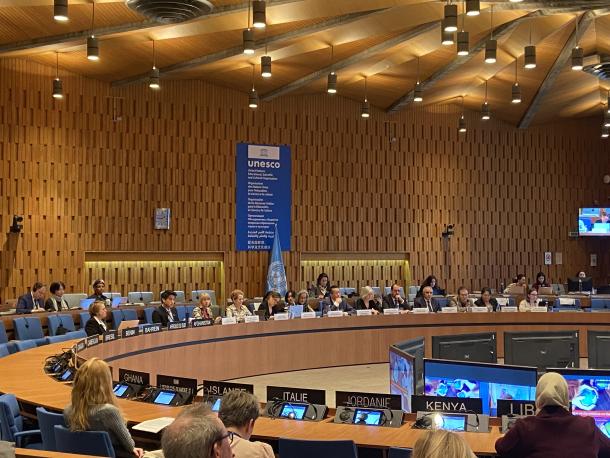
The dialogue brought to light a complex reality. While 62% of countries have legally enshrined the right to education, significant challenges persist. UNESCO's Assistant Director-General for Education, Stefania Giannini, underscored the “need to adapt and update” our international frameworks on education to address contemporary challenges such as digital transformation, climate change and the persistent and emerging challenges faced by vulnerable groups.
Deputy UN High Commissioner for Human Rights, Nada Al-Nashif, advocated for a reimagined approach to education, emphasizing “education and lifelong learning as a global public good” that fosters freedom, curiosity, and critical thinking.
Commitments to expand lifelong learning opportunities for all
Highlighting practical steps towards this vision, Mongolia’s Education and Science Minister Enkh-Amgalan Luvsantseren shared insights into his country’s recent landmark education reforms, stating “we are putting this into practice by ensuring the right to education through our deeds, not just words.” These reforms exemplify a commitment to inclusive, quality and lifelong learning opportunities for all.
Portugal’s Education Minister João Costa stressed the importance of an inclusive education system, arguing “if an education system is not inclusive, it is not a quality education system” and highlighted the need to promote democratic values through education in the face of populism, racism and radicalism.
The two interactive discussions, moderated by UNESCO’s Director for the Division for Policies and Lifelong Learning Systems, Borhene Chakroun, and the UN Special Rapporteur on the right to education, Farida Shaheed, invited all participants to engage in a global reflection, gathering their inputs and comments on the scope of the evolving right to education framework.
The dialogue concluded with a general agreement: to begin the process of expanding the international normative framework on education, ensuring legal underpinnings align with the Transforming Education Summit's vision. This includes enhancing the state obligations on education quality, equity and inclusion, and advancing towards universal access to free education.
This gathering marked a pivotal step in redefining the right to education and aligning it with the needs of our rapidly changing world.
- More about the event
- More on UNESCO’s initiative on the evolving right to education
Related items
- Right to education
HerAtlas: Background, rationale and objectives 12 March 2024
HerAtlas: Disclaimer and terms of use 12 March 2024
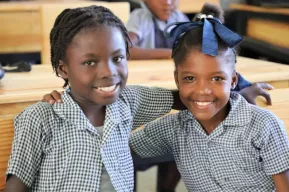
Other recent news


IMAGES
VIDEO
COMMENTS
Answer 2: The right to education is essential as it is a human right and indispensable for the exercise of other human rights. Quality education strives to guarantee the development of a fully-rounded human being. Similarly, it is one of the most powerful tools which can lift socially excluded children and adults out of poverty.
The right to education. Every human being has the right to quality education and lifelong learning opportunities. Education is a basic human right that works to raise men and women out of poverty, level inequalities and ensure sustainable development. But worldwide 244 million children and youth are still out of school for social, economic and ...
The right to education is a human right and indispensable for the exercise of other human rights. Quality education aims to ensure the development of a fully-rounded human being. It is one of the most powerful tools in lifting socially excluded children and adults out of poverty and into society. UNESCO data shows that if all adults completed ...
When the United Nations adopted the Universal Declaration on Human Rights, Article 26 asserted that all people have the right to education. That right appears in other documents such as the Convention on the Rights of the Child (1989) and in treaties about women and girls, refugees, migrants, and others. Many constitutions around the world […]
Education is not a privilege. It is a human right.Education as a human right means:the right to education is legally guaranteed for all without any discriminationstates have the obligation to protect, respect, and fulfil the right to educationthere are ways to hold states accountable for violations or deprivations of the right to education.
The right to education has been recognized as a human right in a number of international conventions, including the International Covenant on Economic, Social and Cultural Rights which recognizes a right to free, primary education for all, an obligation to develop secondary education accessible to all with the progressive introduction of free secondary education, as well as an obligation to ...
A Short History of Freedom of Education and the Right to an Education Educational freedom and the right to an education both have storied histories in the international human rights realm. The Universal Declaration of Human Rights (UDHR), widely considered the seminal work of the modern human rights era, protects both of these rights.
This essay is part of a series highlighting global human rights trends in 2022. Read more here.. Education is fundamental for children's development and a powerful catalyst for improving their ...
"Education is both a human right in itself and an indispensable means of realizing other human rights. As an empowerment right, education is the primary vehicle by which economically and socially marginalized adults and children can lift themselves out of poverty and obtain the means to participate fully in their communities. Education has a ...
Section 1. The right to education as developed in the international human rights framework 1.1. State legal obligations The right to education and its various aspects are legally guaranteed for all by the international human rights legal instruments that ratifying countries are to comply with. The 1960 Convention is
In the 20th century great progress was made worldwide to realize the right to education to the extent that at least basic education can be achieved by many people: they can read, write, calculate ...
Yes! All kids living in the United States have the right to a free public education. And the Constitution requires that all kids be given equal educational opportunity no matter what their race, ethnic background, religion, or sex, or whether they are rich or poor, citizen or non-citizen. Even if you are in this country illegally, you have the ...
Education as a fundamental human right is enshrined in the Universal Declaration of Human Rights (1948) and many other international human rights instruments.UNESCO's foremost standard-setting instrument is the Convention against discrimination in education which dates from 1960 and has so far been ratified by 107 States. It is the first international instrument which covers the right to ...
The first essay is a long essay on Right To Education of 400-500 words. This long essay about Right To Education is suitable for students of class 7, 8, 9 and 10, and also for competitive exam aspirants. The second essay is a short essay on Right To Education of 150-200 words. These are suitable for students and children in class 6 and below.
Education is a key social and cultural right and plays an important role in reducing poverty and child labour. Furthermore, education promotes democracy, peace, tolerance, development and economic growth. There are a number of articles in the UN Convention on the Rights of the Child that focus on a child's right to education. Articles 28 and ...
Governments must provide good quality education and make sure all children can access it, without discrimination. This is an international legal obligation and governments can be held accountable for failing to provide education for all its citizens. Education has been recorded as a basic human right in international law since 1948.
Abstract. This essay is a philosophical analysis of the concept of the "right to an education" — a concept central to several important U.S Supreme Court cases. It provides a rationale and a criticism of two views of education as a right: namely the welfare right to schooling and the right to be prepared for adult life, arguing that ...
The overall aim of the article is to analyse how the universal right to education have been built, legitimized and used. And more specifically ask who is addressed by the universal right to education, and who is given access to rights and to education. The first part of the article focus on the history of declarations, the notion of the universal right to education, emphasizing differences in ...
AMMAN, 18 October 2017 - "More than two and a half years of renewed conflict in Yemen have once again put the education of 4.5 million children on the line, adding to the long list of bitter hardships that children have endured. Three quarters of teachers have not received their salaries in nearly a year, and the violence has forced one in ...
Write an essay on right to education act 2009. Essay on Right to Education 300 Words. Education is crucial to one's life as it enables the individual to realize his real potential and use it effectively for the growth of a nation. An educated man has the power to make the right decision based on the facts and figures related to the issue.
Footnotes Jump to essay-1 For more on Congress's enforcement power under Section 2 of the Thirteenth Amendment, see Amdt13.S2.1 Overview of Enforcement Clause of Thirteenth Amendment. Jump to essay-2 The Civil Rights Cases, 109 U.S. 3, 8-9 (1883). Jump to essay-3 Id. at 23. Jump to essay-4 Id. at 25. See also Corrigan v. Buckley, 271 U.S. 323, 327, 330-32 (1926) (holding that the ...
Sample College Essay 2 with Feedback. This content is licensed by Khan Academy and is available for free at www.khanacademy.org. College essays are an important part of your college application and give you the chance to show colleges and universities your personality. This guide will give you tips on how to write an effective college essay.
Essay by Brian Zhang. Mar 31, 2024, 6:07 AM PDT. The author, not pictured, got into Yale. Yana Paskova/Getty Images. I reviewed my Yale admissions file to see what the Ivy League school thought ...
Most people in the world know the importance of education. However, many might not be aware that education is a human right protected by the law, and one that must be guaranteed to all by the State. The fact that the right to education is guaranteed by law gives it a concrete and legal substance.
Mr. De Girolami is a law professor at the Catholic University of America. He is writing a book about traditionalism in constitutional law. It is a sign of the polarizing nature of the current ...
On 11 December 2023, the Indian Prime Minister launched the Viksit Bharat @2047 scheme via a video conferencing platform. In this video conference, he declared the formal launch of this scheme along with its four pillars: Yuva (Youth), Garib (Poor), Mahila (Women) and Kisan (Framers). Viksit Bharat represents a blueprint for India's development.
April 1, 2024 at 7:45 a.m. EDT. A protester holds a sign criticizing Justice Clarence Thomas at a rally outside the Supreme Court on March 26. (Amanda Andrade-Rhoades/AP) Supreme Court observers ...
Meanwhile, while fewer faculty members used AI, the percentage grew to 22% of faculty members in the fall of 2023, up from 9% in spring 2023. Teachers are turning to AI tools and platforms ...
Ms. Murray is a law professor at New York University. Ms. Shaw is a contributing Opinion writer. In his majority opinion in the case overturning Roe v. Wade, Justice Samuel Alito insisted that the ...
In a world constantly reshaped by technological advances and global crises, the right to education, a cornerstone of societal progress, is at a crossroads. Global challenges, such as pandemics and climate change, among other things, cause seismic societal shifts, questions arise: How does the right to education apply to these new contexts? How can we ensure it is effectively implemented in ...